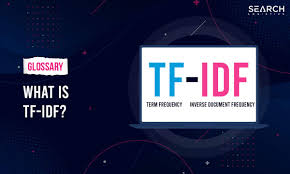The Power of TF-IDF in SEO
When it comes to optimizing your website for search engines, one important tool that you should be familiar with is TF-IDF. TF-IDF stands for Term Frequency-Inverse Document Frequency and is a metric used to evaluate the importance of a keyword within a document relative to a collection of documents.
TF-IDF is crucial in SEO because it helps search engines understand the relevance of a particular keyword within your content. By using TF-IDF analysis, you can optimize your content to include the right keywords at the right frequency, improving your chances of ranking higher in search engine results pages.
How does TF-IDF work? The term frequency (TF) measures how often a keyword appears in a document, while the inverse document frequency (IDF) measures how unique or rare a keyword is across all documents. By combining these two metrics, TF-IDF assigns a weight to each keyword that reflects its importance in the context of the entire document collection.
By leveraging TF-IDF in your SEO strategy, you can create content that is not only rich in relevant keywords but also tailored to meet the specific needs and expectations of search engine algorithms. This can lead to improved visibility, increased organic traffic, and ultimately higher conversion rates for your website.
In conclusion, understanding and implementing TF-IDF analysis in your SEO efforts can have a significant impact on your website’s search engine rankings. By optimizing your content with the right keywords based on TF-IDF insights, you can enhance your online presence and attract more valuable traffic to your site.
Boost Your SEO Strategy: 5 Benefits of Using TF-IDF for Enhanced Keyword Optimization and Visibility
- Improves keyword optimization by analyzing term frequency and importance
- Enhances content relevance and quality for search engine algorithms
- Helps in identifying and targeting specific keywords effectively
- Increases the chances of ranking higher in search engine results pages
- Leads to improved organic traffic and better visibility online
Understanding the Challenges of TF-IDF in SEO: Complexity, Over-Optimization, and More
- 1. Complexity
- 2. Over-optimization
- 3. Limited Scope
- 4. Constant Updates
- 5. Resource Intensive
- 6. Misinterpretation
Improves keyword optimization by analyzing term frequency and importance
By analyzing term frequency and importance, TF-IDF in SEO enhances keyword optimization to a significant degree. This approach allows website owners to strategically incorporate relevant keywords at optimal frequencies within their content, ensuring that the most crucial terms are highlighted effectively. By understanding the significance of each keyword in relation to the entire document collection, TF-IDF enables a more refined and targeted approach to keyword usage, ultimately leading to improved search engine visibility and higher rankings for the website.
Enhances content relevance and quality for search engine algorithms
Utilizing TF-IDF in SEO enhances content relevance and quality for search engine algorithms by ensuring that the keywords within the content are not only present but also strategically placed based on their importance. This approach helps search engines better understand the context and significance of the content, leading to improved rankings and visibility. By incorporating TF-IDF analysis, website owners can create high-quality, targeted content that resonates with both users and search engines, ultimately driving organic traffic and engagement.
Helps in identifying and targeting specific keywords effectively
TF-IDF in SEO offers a valuable advantage by aiding in the identification and precise targeting of specific keywords. By analyzing the importance of keywords within a document relative to a broader collection, TF-IDF helps website owners understand which keywords are most relevant and significant. This insight enables them to strategically incorporate these keywords into their content, optimizing it for search engines and increasing the likelihood of ranking higher in search results. Ultimately, the ability to identify and target specific keywords effectively through TF-IDF analysis enhances the overall SEO strategy and improves the visibility and reach of the website.
Increases the chances of ranking higher in search engine results pages
By utilizing TF-IDF in SEO, you significantly enhance the likelihood of achieving higher rankings in search engine results pages. This tool allows you to fine-tune your content by strategically incorporating relevant keywords at optimal frequencies, thereby signaling to search engines the importance and context of your content. By leveraging TF-IDF analysis, you can align your content more effectively with search engine algorithms, ultimately improving your website’s visibility and increasing the probability of ranking well in search results.
Leads to improved organic traffic and better visibility online
Utilizing TF-IDF in SEO strategies can lead to a substantial increase in organic traffic and enhanced online visibility. By optimizing content with the right keywords based on TF-IDF analysis, websites can attract more relevant visitors who are actively searching for the products or services they offer. This targeted approach not only drives higher quality traffic but also improves visibility in search engine results pages, ultimately increasing the likelihood of reaching and engaging with the desired audience online.
1. Complexity
Implementing TF-IDF analysis in SEO can present a significant challenge due to its complexity. This process can be time-consuming and demanding, as it necessitates a thorough comprehension of the algorithm and its practical application. Ensuring that the TF-IDF analysis is correctly executed requires expertise and attention to detail, which may pose difficulties for those without a strong background in search engine optimization techniques.
2. Over-optimization
Over-optimization is a significant con of relying too heavily on TF-IDF metrics in SEO. When content creators focus solely on meeting specific keyword density requirements based on TF-IDF analysis, they run the risk of creating content that feels forced or unnatural. This can ultimately detract from the overall user experience, as content may become less engaging and valuable to readers. Striking a balance between optimizing for search engines and creating high-quality, user-friendly content is crucial to avoid over-optimization pitfalls associated with TF-IDF SEO strategies.
3. Limited Scope
One significant drawback of TF-IDF SEO is its limited scope in capturing the full context or intent behind user search queries. While TF-IDF analysis focuses on keyword frequency and importance within a document collection, it may overlook the nuances and complexities of user search behavior. As a result, relying solely on TF-IDF metrics for keyword optimization can lead to suboptimal keyword usage that does not fully align with the user’s search intent, potentially impacting the effectiveness of your SEO strategy.
4. Constant Updates
Constant Updates: One drawback of using TF-IDF in SEO is the need for frequent adjustments and updates. Search engine algorithms are constantly evolving, requiring website owners to regularly revisit and revise their TF-IDF strategies to ensure they remain effective. This ongoing maintenance can be time-consuming and resource-intensive, as staying ahead of algorithm changes is essential to maintaining high search engine rankings and visibility. Failure to adapt to these updates promptly may result in a decline in organic traffic and overall SEO performance.
5. Resource Intensive
One notable drawback of utilizing TF-IDF in SEO is its resource-intensive nature. Conducting comprehensive TF-IDF research and optimization demands a substantial investment of resources, including time, specialized tools, and expert knowledge. Analyzing the relevance and significance of keywords across a document collection can be a time-consuming process, requiring careful attention to detail and thorough analysis. Additionally, accessing and utilizing the necessary tools and expertise to effectively implement TF-IDF strategies can further add to the resource burden, making it a challenging aspect for some businesses to incorporate into their SEO practices.
6. Misinterpretation
Misinterpretation of TF-IDF results poses a significant con in SEO strategy. Without a thorough understanding or proper context, there is a risk of making misguided decisions that may negatively impact the effectiveness of your SEO efforts. Applying TF-IDF analysis incorrectly can result in subpar outcomes, where the optimization of content may not align with search engine algorithms or user intent. It is crucial to interpret TF-IDF data accurately and in the right context to ensure that SEO decisions are informed and yield positive results for website visibility and ranking.




